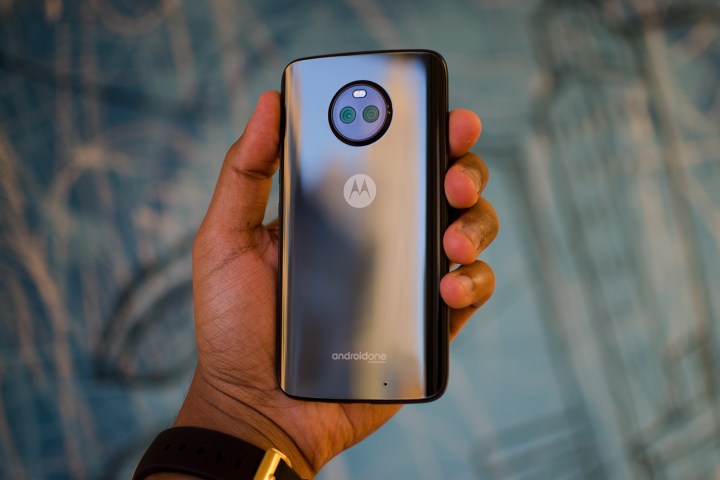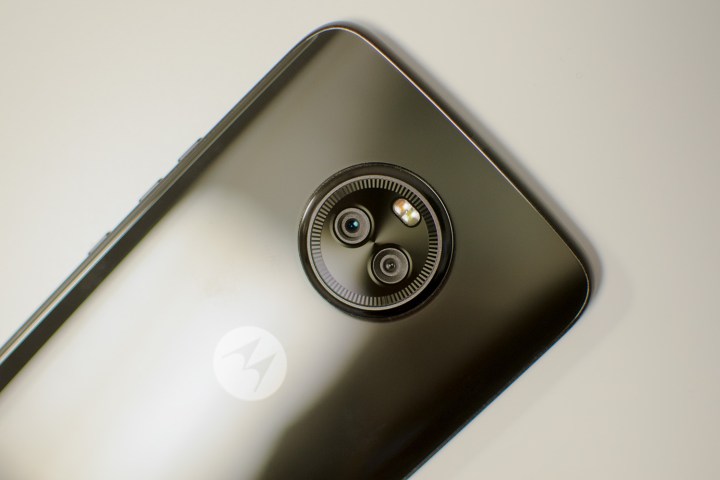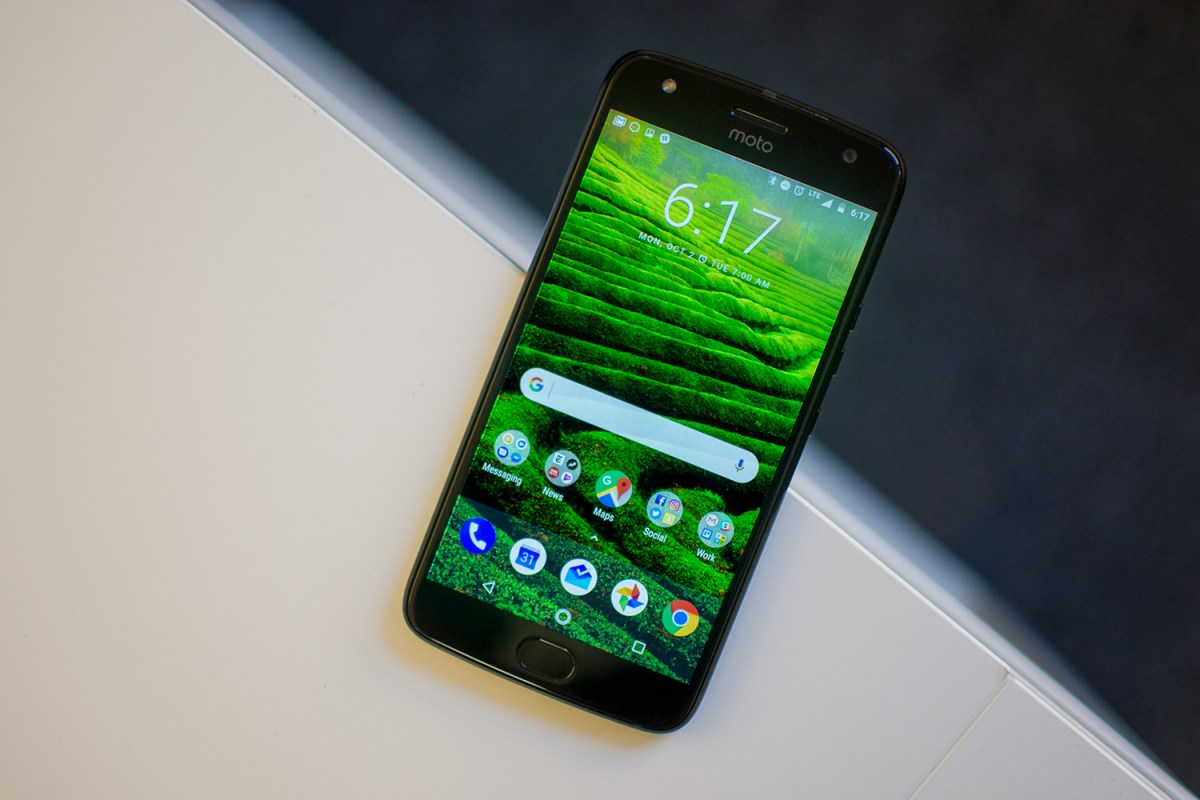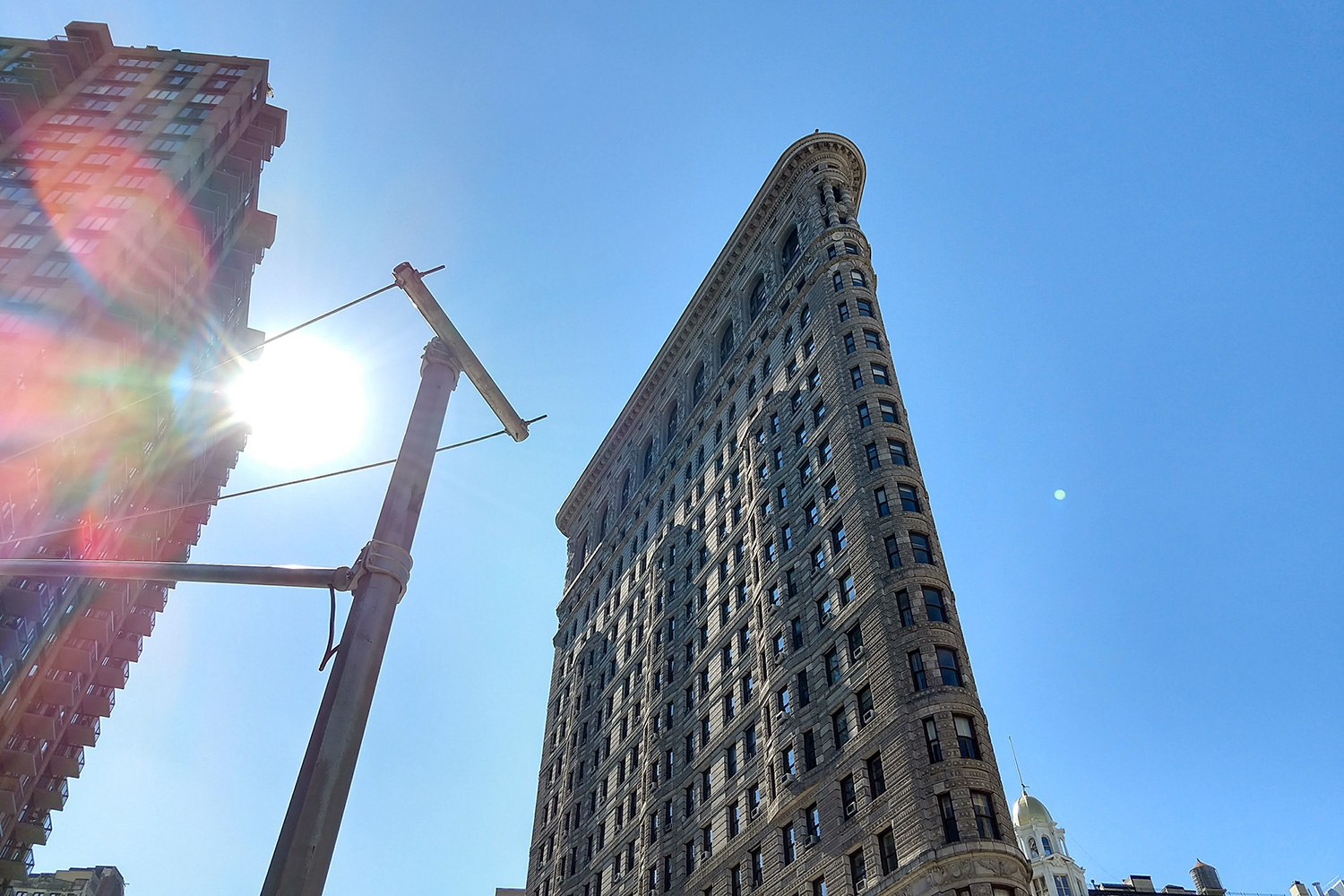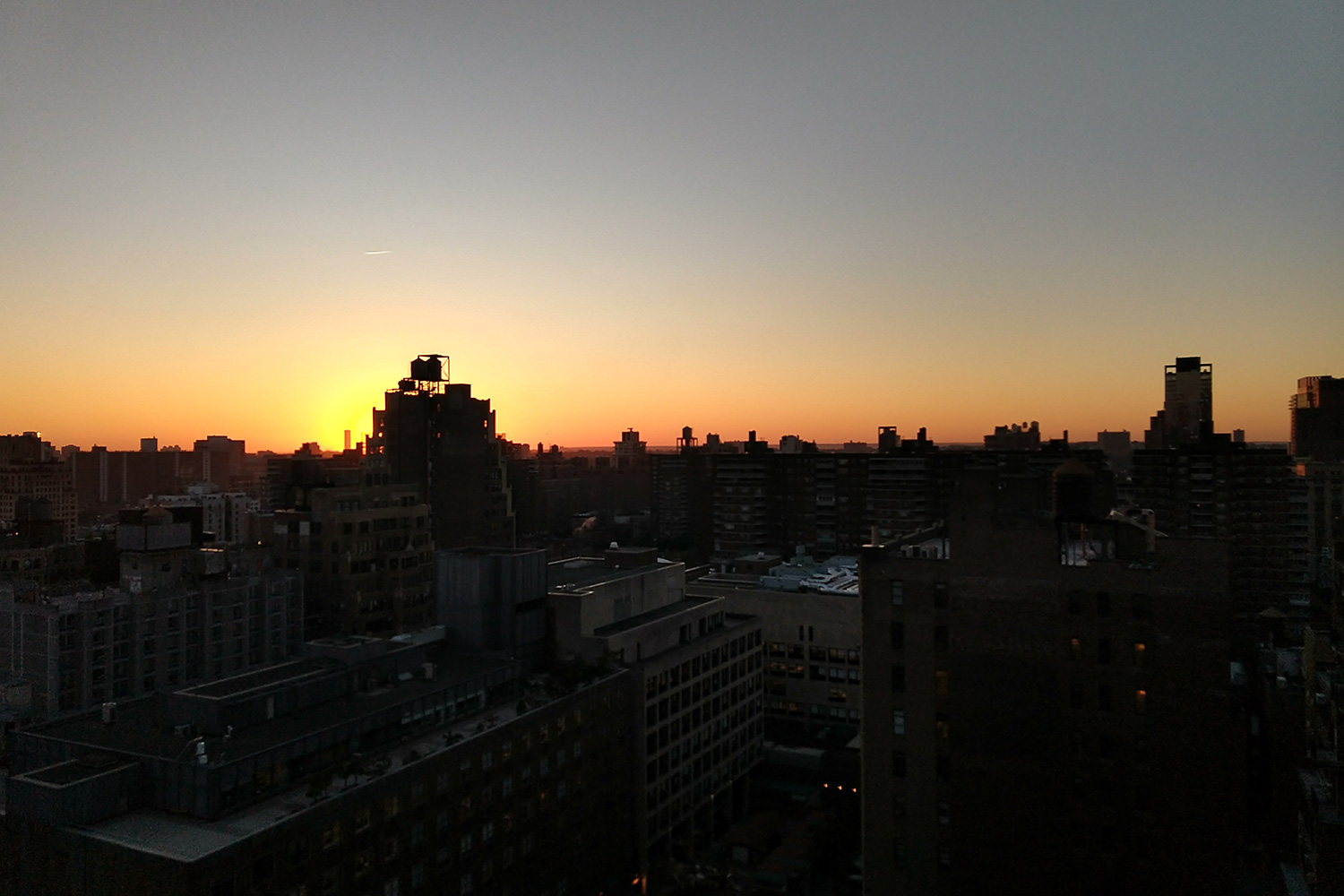- Takes great photos in good lighting
- Solid performance
- IP68 water-resistant
- Day-long battery life
- Camera shutter lag is frustrating
- No Tempow Audio in Android One model
- No Android 8.0 Oreo yet
Once Motorola’s premier smartphone, the Moto X lineup has been neglected for the better part of two years. The Moto X was the first phone Motorola produced after being acquired by Google, and we gave it a glowing review. But under Lenovo’s leadership, the company focused more on the modular Moto Z series, as well as the Moto E and Moto G budget smartphones. Now, after all those ups and downs, the Moto X is finally back — and it’s certainly worth a look if you don’t want to shell out $600 or more for a smartphone.
In our review, we found the new Moto X4 offers a lot of phone for an affordable price. But know that there are two versions: A Moto X4 Android One on Google’s Project Fi wireless carrier and the regular Moto X4 sold by Motorola and other retailers. We’ve now fully tested the Moto X4 Android One and the official Motorola model, and there are a few differences between the two.
All-glass design, IP68 water-resistance
If you remember the well-received and popular design of the Moto X (and its 2014 and 2015 successors), you may be a little disappointed with the new Moto X4. Its metal frame is sandwiched by fingerprint-attracting glass, and there’s an unnecessarily-large circular bump on the back of the top center that holds two cameras and the flash. A Motorola logo sits in the center, and an “Android One” label is at the bottom if that’s the model you opt for. The Motorola model looks exactly the same, minus the label.
We like the minimal rear design, and light reflecting off the glass makes it look like the X4 is shifting colors. No matter what, you really do need a micro fiber cloth on you at all times to get rid of the fingerprints and keep the phone looking sleek. We almost always prefer no camera bumps on phones, and we were continuously worried about scratching the camera glass when putting the X4 on a flat surface, or even just sliding it around on a desk. The phone will rock side-to-side if you push down on one of the edges because of the camera bump, which can be frustrating for those of you who like to use phones flat on a desk. To be fair, a good case would solve both of these issues.
The Moto X4 will survive underwater up to 1.5 meters for 30 minutes; that’s seriously impressive for the price.
But what we miss the most is the original Moto X’s ergonomic design. The 2013 phone curves to fit the palm comfortably, and almost perfectly. Unfortunately, that’s not the case anymore, even if the sides of the X4’s rear slightly curve into the front. That’s not to say the X4 is uncomfortable to use; the 5.2-inch screen is small enough to make the phone easy to hold, and all of its parts are accessible.
Speaking of the LCD screen, you get a 1,920 × 1,080 pixel resolution that’s sharp and vibrant. It’s colorful and not too oversaturated, and it gets bright enough to see in broad daylight.
The volume buttons are on the right edge, and there’s a textured power button below them, making it easy to identify without looking. The SIM card tray is at the top with an embedded MicroSD card slot, meaning you’re not stuck with the included 32GB of internal storage if you need more space. It charges via the USB Type-C port on the bottom, and you’ll (thankfully) find a headphone jack next to it.
The front is largely uninteresting. The Moto X4 doesn’t jump on board the “bezel-less” design we’re seeing most other smartphones adopt, including Apple with the iPhone X. The edges around the screen are large, and it makes the phone look a tad dated. On the top is the Moto branding, with the selfie camera on the right and a flash on the left.
The fingerprint sensor is slightly indented on the bottom chin, and we didn’t have any issues with it. It recognized our prints and unlocked the phone quickly.
Overall, the Moto X4 is stylish and smooth. It feels like an expensive phone despite its low price, largely due to the all-glass design. We’d love if this glass served a purpose other than making the phone more fragile, such as support for wireless charging, but it doesn’t.
But there’s one part of the design that makes up for everything: An IP68 water-resistant rating. That’s a slightly better rating than the iPhone 8 and the Google Pixel 2. It means, like the Samsung Galaxy S8, that the Moto X4 will survive underwater up to 1.5 meters for 30 minutes. That’s seriously impressive for the price of this phone, as IP67 and IP68 water-resistance is typically reserved for expensive flagship phones, or overtly rugged devices. Hopefully its inclusion in the Moto X4 means that we’ll see it becoming a standard in more mid- and budget-range phones next year.
Solid performance
Swiping through the interface was quick, though apps often took a few extra seconds to fully load.
The X4 doesn’t have the snazziest design, which probably goes to the Essential Phone, nor does it pack a fancy high-end processor. The Qualcomm Snapdragon 835 powers Motorola’s Moto Z2 Force and several other flagship 2017 Android phones, but the Moto X4 utilizes Qualcomm’s Snapdragon 630 chipset with 3GB of RAM (there’s a 4GB RAM variant available in other international markets).
We didn’t run into major issues with performance. Swiping through the interface was quick, though apps often took a few extra seconds to fully load. We did notice some sluggishness when we were downloading and updating a lot of apps at the same time, and the occasional stutter wasn’t uncommon.
The phone stuttered a little more when scrolling through apps like Twitter or on webpages on Chrome, and sometimes with multitasking. There were no glaring problems using split-screen mode, but as we mentioned earlier, apps took two to three seconds to fully load up.
Take a look at some of the Moto X4’s benchmark scores:
- Antutu: 70,217
- 3DMark Sling Shot: 840
- Geekbench 4 CPU: 867 single-core, 4,127 multi-core
The OnePlus 5 received an AnTuTu score of 181,599, and the Moto G5 Plus scored 63,190. You’re not going to see an impressive jump in performance from the $280 G5 Plus, but you will if you spend $80 more for the OnePlus 5.
Still, games like Maximum Car and Tiny Archers played smoothly without any issues, and the Moto X4 also handled the graphically intensive Transformers: Forged to Fight well. It wasn’t as smooth as we’ve seen the game on Snapdragon 835 devices, but it was perfectly playable.
Overall, the Moto X4 offers solid performance that should satisfy most people. As heavy mobile users, we acceptably got by with the X4, but avid mobile gamers may want to look at Snapdragon 835 devices.
So what’s Android One?
Android One is Google’s software platform to bring the pure, stock Android experience to budget phones. That means you get stock Android without any “theme” or “skin” from the manufacturer. There’s no bloatware — only Google apps are pre-installed — and you’ll get Android and security updates as soon as they are released, as with the Google Pixel smartphones.
Google has largely pushed Android One phones internationally in developing countries; the Moto X4 is the first Android One smartphone available in the U.S. Sadly, you can purchase this specific version only from Google’s Project Fi, a mobile virtual network operator. Fi uses the Sprint, T-Mobile, and U.S. Cellular networks to give you the best coverage wherever you are, and it offers plenty of other perks you can read about in our Project Fi guide.
The Moto X4’s software is uncluttered, simple, and a pleasure to use. Swipe up to access apps and right to find the Google feed. Only Google apps are on-board, as well as the Project Fi app to manage your service. It runs Android 7.1.1, but Google said an update to the more recent Android 8.0 Oreo will arrive before the end of the year (as of December 20, our review unit has yet to receive the Oreo update). Interestingly, that update will also improve Bluetooth from version 4.2 to version 5.
There are some small, Motorola-specific features that are genuinely useful, namely Moto Actions and Moto Display. Moto Actions offers up gestures you can make to trigger certain actions, such as a chop gesture twice to turn on the flashlight; or twisting the phone back and forth twice to launch the camera. Moto Display adds a blue-light filter at night so you get a better night’s rest, and notifications will fade on and off the screen in standby mode.
We’ve loved these Moto Actions since they debuted on the first Moto X, and Moto Display continues to be helpful. We’re happy to see them here in tandem with stock Android.
Google confirmed to Digital Trends that if you purchase the Android One Moto X4 on Project Fi and then cancel Fi service, the X4 will still work on any other major U.S. carrier.
What’s different between the Moto X4 Android One and the other Moto X4?
While we generally prefer stock Android to many other manufacturer’s skins, there are plenty of great reasons to opt for the regular X4 over the Android One model.
First, you can purchase it without a Project Fi subscription. The regular Moto X4 will cost the same amount, and you can buy one from Amazon (with a Prime account) for as low as $280 with lockscreen ads and offers.
There are plenty of great reasons to opt for the regular X4 over the Android One model.
Software-wise, you get a similar, near-stock Android experience with more Motorola and third-party apps installed. There are more Moto-specific functions available, such as one-button navigation, where you can hide the Android navigation bar and use the fingerprint sensor to navigate; Moto Voice, which lets you see the weather, calendar appointments, or launch apps just by using the “Show me” trigger phrase; and Moto Key, which allows you to log into password-secured websites on your laptop or desktop with the X4’s fingerprint sensor.
The regular Moto X4 also has Amazon’s Alexa voice assistant built in, which gives you an additional option in case you don’t use the Google Assistant that’s already available.
One of the cooler features not available on the Android One model is the Tempow Bluetooth Audio Profile. It’s a technology that for the first time lets you connect to up to four Bluetooth headphones or speakers to play music simultaneously with no loss of audio quality. We tried it out a few months ago and liked it a lot, and it’s definitely a feature that makes the Moto X4 unique.
It’s very easy to use on the regular Moto X4, simply open up the settings and look for Wireless Sound System, then tap on the Bluetooth speakers or headphones that you want to connect. The music is perfectly synced across all devices, enabling you to transform a ragtag collection of old Bluetooth speakers into a Sonos-style sound system.
Capable camera
Like most new smartphones, the Moto X4 comes with a dual-camera setup. Rather than simply using it for a Portrait Mode-like function, where the background of a subject is blurred for a cool DSLR effect, Motorola is also offering a wide-angle mode, like LG’s V30 and G6, and a few other neat tricks.
The primary shooter is packed with 12-megapixels with an f/2.0 aperture, and the second wide-angle camera has 8-megapixels with an f/2.2 aperture. The camera interface is simple to use, and there’s even a pro mode if you want to fine-tune the settings.
Before talking about the camera’s output, our biggest complaint about the Moto X4’s camera is a flaw we’ve seen before in Motorola phones. When you tap the shutter icon, the photo is supposed to be captured immediately. On the X4, there’s a visible delay when you press the shutter icon to when the captured animation occurs. This shutter lag sometimes causes some photos to be a little blurry unless you stand incredibly still, but sometimes it’s just the animation that’s slow. It can be especially frustrating when you’re trying to get a photograph involving movement.
Barring this issue, the Moto X4 captures excellent photos, as do many of today’s best smartphone cameras. Colors are neither over- nor under-saturated, and there’s surprisingly great detail in the phone’s captured images. The problem? You need good lighting. It can do a solid job in average lighting, but the Moto X4 shines with good, outdoor lighting. Many of the low-light photos we took were blurry, far too grainy, and were largely unusable — but it’s somewhat hit or miss. There were a few of our shots that came out pretty well, but at the end of the day, the X4’s camera simply wasn’t consistent, and that’s a problem.
The Depth Enabled mode is like Portrait Mode on the iPhone 8 Plus. It adds a blur effect behind a subject and it’s pretty good, though not as good as the Google Pixel 2, which doesn’t need two cameras to do the trick. The Moto X4 did sometimes have trouble figuring out the edges of a subject and where it needed to blur.
The wide-angle mode is acceptable, but it’s not our preferred mode of photography with the Moto X4. It’s largely because there’s a slight drop in image quality, especially in low-light. There’s also a mode called Spot Color, which lets you choose a single color to pop with everything else in monochrome. It worked relatively well during our tests, and it’s a lot of fun to play around with — barring the occasional errors.
If you’re unsure what landmark you’re photographing, the Moto X4 can sometimes detect it — tap the GPS logo that pops up when you point the camera at a landmark. We tried it in front of the Empire State Building and it couldn’t recognize it, but it did accurately identify New York City’s Flatiron building. That said, this is definitely a gimmicky feature few people will likely use.
Despite the selfie camera’s unusual 16-megapixel lens, we didn’t think it was anything to write home about. Photos looked average in good and decent lighting, and mediocre in poor low-light. The flash is handy, however, if you’re in a super dark place.
Overall, the Moto X4’s camera is promising, but Motorola needs to fix the shutter delay in the camera because it makes the experience far more frustrating. The December software update listed camera improvements, but sadly the shutter delay remains.
Battery
We went from zero to 85 percent within 40 minutes.
The Moto X4 will last you a full day of use on a single charge. With heavy use starting at 8 AM, we saw the battery drop to 23 percent by 11 PM. That’s great, and you can certainly expect it to last longer than a day with medium to light use. Our heavy use involved playing music, watching videos, browsing social media and the web, and taking photos.
Motorola’s TurboPower technology charges the phone extremely fast. We went from zero to 85 percent within 40 minutes, though you need to use the included cable and power adapter to achieve those speeds.
Price, availability, and warranty
The Moto X4 Android One was $400 at release on Project Fi, and it’s the only place you can buy this model, though, as of December there’s a $75 discount. You can always cancel Fi service later, and the phone will still be compatible with all the major U.S. carriers.
The regular Moto X4 was initially priced at $400 as well, but is now available for $350. You can grab one from Best Buy, B&H, Fry’s, Jet, Motorola’s website, Newegg, Republic Wireless, and Ting. It’s also on Amazon, and Prime Exclusive members can get the lower-priced $280 model, but you’ll have to put up with lockscreen ads and offers.
Motorola offers a standard warranty on its products, which means the phone is covered from manufacturing defects for one year from the date of purchase.
Our Take
The Moto X4 offers solid performance, a promising but frustrating camera, daylong battery life, and an uncluttered Android experience in an attractive, water-resistant body. For $350 or less, depending on where and when you buy, it’s a good option over most of the budget options below it.
Is there a better alternative?
Yes, if you can spare the extra cash, we highly recommend taking a look at the $500 OnePlus 5T. It has the Snapdragon 835, which is a superior processor, and a great bezel-less design. It is not water-resistant, though.
There’s also the $350 HTC U11 Life, which is our favorite budget phone in its price range. We think it beats out the Moto X4 in performance and camera capabilities, and it’s even water resistant.
Motorola’s own Moto G5S Plus is a solid alternative for $240. It looks boring and it feels cheap, but you get similar performance and just a slightly worse camera experience. If money is really tight, then check out the $200 Honor 7X.
The Moto X4 is smack dab between two of our favorite budget phones. If you’re looking at the Amazon Prime Exclusive Moto X4 that costs $280, you should pick it over the $240 or $300 model Moto G5S Plus. But if you have a little more to spend and are considering the $350-priced model, consider the OnePlus 5T.
How long will it last?
Considering the Moto X4 is all glass, we recommend a case to protect it from drops. It’s water resistant, so it can handle drops in the pool or splashes.
The Android One model promises fast version and security updates, and we expect it to least two to three years or longer. We can’t say the same for the regular model, and we expect it to get updates for one to two years.
Should you buy it?
Yes. It’s becoming harder to recommend at the original $400 price, but for $325 from Google or $280 from Amazon, it’s still a good buy. There aren’t a lot of smartphones at this price range that offer IP68 water-resistance. If you’re prone to accidents, this is a solid option that’s affordable. Regardless of what model you choose, you’re getting a stock or near stock Android experience with solid performance.
Still, we can’t recommend the OnePlus 5T enough. It will perform far better and doesn’t cost a huge amount more.
Update: We added mention of the latest software updates, new discounted pricing, and highlighted the Moto G5S Plus, HTC U11 Life, Honor 7X, and OnePlus 5T as fresh alternatives.


